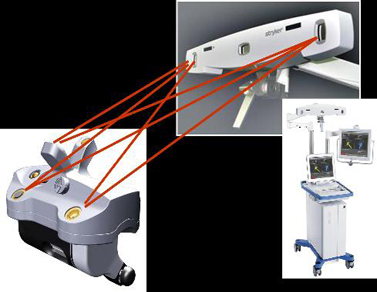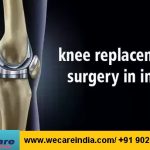HIP RESURFACING COMPUTER NAVIGATION SURGERY IN INDIA
Computer-assisted navigation is a dependable and accurate method of positioning hip resurfacing components during arthroplasty, as measured by cup inclination, and a reliable technique for valgus stem placement and avoidance of notching. Furthermore, computer navigation allows for consistency of component alignment independent of procedural experience.
Computer Assisted Hip Resurfacing Surgery in india
In hip resurfacing it is important that both femoral head and acetabular side implants have been put with proper size, orientation and position. In conventional hip resurfacing these have been put with help of non – CAS instruments which may not be accurate and precise. This inaccuracy and imperfection would lead to early failure and complications like fracture of neck femur.
What are the potential benefits of hip resurfacing over conventional hip replacement ?
The bearing of the resurfacing hip is a much larger diameter than a standard hip replacement. This result in a greater range of movement being possible before the hip dislocates (comes out of joint).
In a standard hip replacement, the ball and neck of the hip is cut off, a metal stem is inserted into the shaft of the thigh bone and a new ball attached to the stem.
In a hip resurfacing, the ball of the hip is recoated rather than entirely replaced, resulting in less bone removal. This makes any possible revision of a resurfacing hip, (if it should fail), slightly more straightforward than a standard hip replacement.
The cobalt chrome metal on metal bearing surface may prove to be a very durable and long lasting hip replacement and is indicated specifically for the more active person wishing to return to sporting activities.

How is the surgery performed?
There are 3 commonly used methods of getting to the hip joint to perform this procedure. The most commonly used approach is the posterior approach. The benefits of this technique is that there is very little disruption of the muscles which power the hip allowing for a rapid recovery from surgery and a low risk of having a limp in the longer term.
The technique does however involve cutting the major blood vessel which nourishes the bone under the new head resurfacing and therefore carries a small risk of the bone supporting the new metal head breaking off either in the first few months after surgery, or slowly moving position and falling off the femur at some point after the first 5 years. Either of these problems would require the resurfacing being changed to a complete hip replacement. A further problem with this approach is that it can be difficult to obtain a perfect position of the implants, which can cause a slight restriction of the movement of the hip, particularly the ability to bend at the hip to reach your toes.
Ones of the most important factors are the accuracy of prosthesis placement and the restoration of surrounding muscle and ligament balance. This relies mostly on the orthopedic surgeons skill and judgment. However, research has shown that incorrect placement still occur even with the most skilled and experienced surgeons. The chance for incorrect prosthetic placement will be greater in a less skilled or inexperienced surgeon. Therefore, computer technology has been introduced to assist in more accurate positioning of prosthetic components, allowing the surgeons to make informed decisions intra-operatively for precise prosthetic placement.














